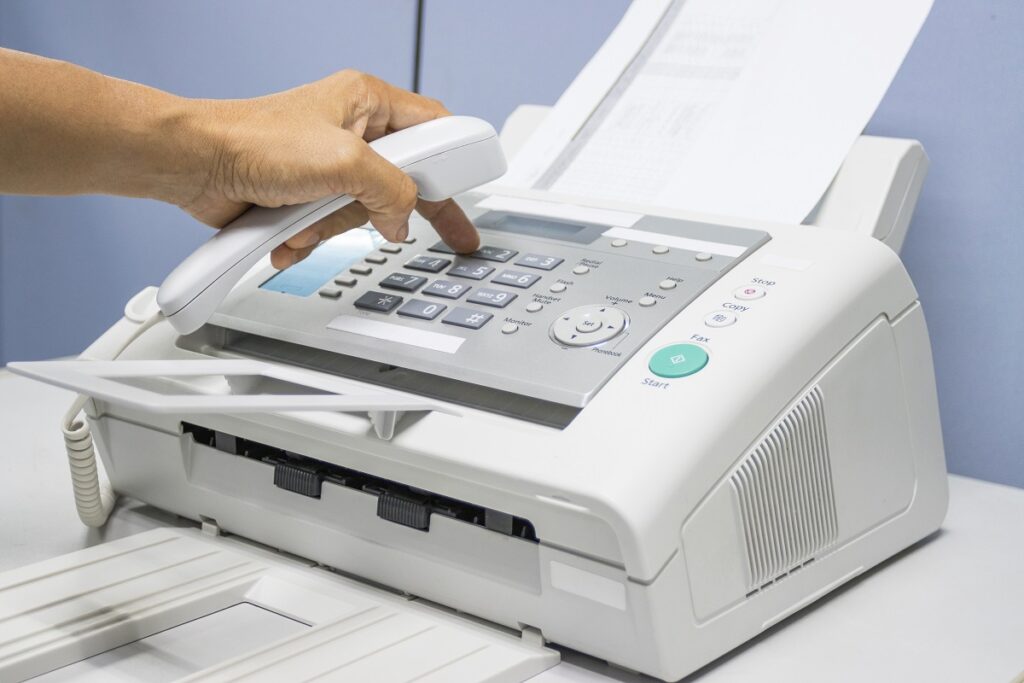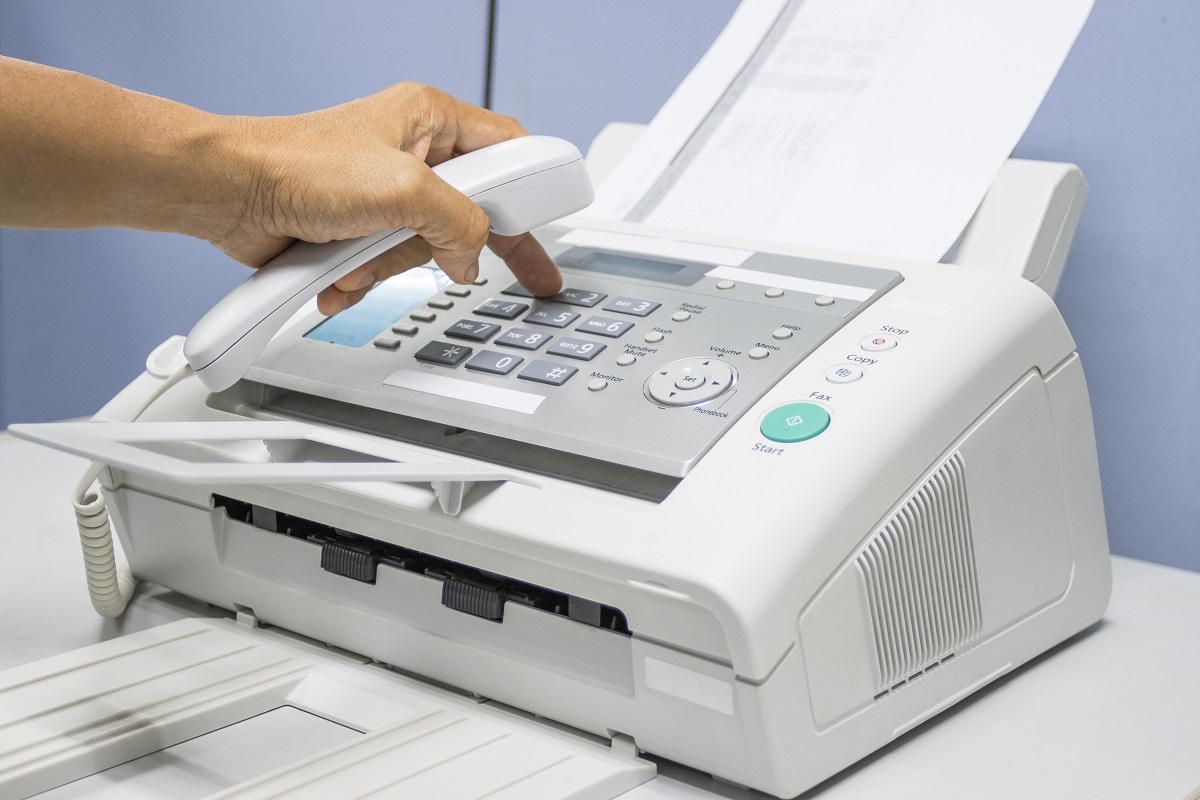
In today’s fast-paced business world, communication plays a vital role in the success of any organization. With the advent of technology, there are now multiple ways to communicate with colleagues, business partners, and customers. Two of the most commonly used communication methods are email and fax.
Email and fax are both popular methods of communication in the business world, but they have their own unique advantages and disadvantages. In this article, we will explore the differences between email and fax and help you determine which method is best for your business needs.
What Is Email and How Does It Work?
Before we delve into all the crucial differences between electronic mail and faxing, let’s briefly explain how both of these methods of communication work.
Email is a method of sending and receiving electronic messages over the internet. It involves creating a message, including a subject line, body text, and any attachments, and sending it to the recipient’s email address. The recipient can then read, reply, or forward the message as needed.
One of the biggest advantages of email is its speed and convenience. Emails can be sent and received instantly, making it easy to communicate with colleagues and clients across the globe. Additionally, email allows for the attachment of files, such as documents, images, and videos, making it an efficient way to share information.
What Is Fax and How Does It Work?
Fax, short for facsimile, is a method of sending and receiving printed documents over a phone line. It involves scanning the physical document, converting it into a digital signal, and transmitting it over telephone lines to the recipient’s fax machine. The recipient’s fax machine then converts the digital signal back into a printed document.
Fax was once the primary method of transmitting documents in the business world, but it has been largely replaced by email and other digital communication methods. However, many businesses still use fax as a way to transmit sensitive documents or when a physical copy of a document is required.
Advantages of Email Communication
Email has become the go-to method of communication in the business world for a number of reasons. Some of the advantages of email communication include:
Speed and Convenience
As mentioned earlier, one of the biggest advantages of email is its speed and convenience. Emails can be sent and received instantly, making communicating with other entities and sending documents and files easy.
You don’t need a fax machine or connection to traditional telephone lines to be able to send your information. All you need is an internet connection and a computer, mobile, or tablet. This makes it one of the easiest ways to send documents in digital form.
Cost-Effective
Email is a cost-effective way to communicate with others. Unlike fax, which requires a dedicated phone line and a fax machine, email only requires an internet connection and a device to send and receive messages.
Easy to Use
Email is easy to use and requires no special training or equipment. Most people are familiar with how to use email, making it a simple method of communication.
Environmentally Friendly
Email is an environmentally friendly method of communication. It eliminates the need for paper documents and reduces the amount of waste generated by traditional communication methods.
Advantages of Fax Communication
Although fax has largely been replaced by email and other digital communication means, it still has its advantages. Some of the benefits of fax communication include:
Security
One of the most significant advantages of fax is its security. Unlike email, which can be intercepted and read by hackers, fax transmissions are more difficult to intercept because they utilize the telephone network for sending documents and therefore are considered more secure.
Additionally, it is possible to have the best of both worlds with faxing, for example, by choosing modern fax machines or faxing online that use cloud-based technology and various advanced encryption protocols, making it possible to send documents via the internet in a much safer way.
Legal Validity
Many jurisdictions consider fax documents legally binding, making it a preferred method of transmitting sensitive documents such as contracts and legal agreements.
Signature Verification
Fax allows for the verification of signatures, making it a preferred method for transmitting signed documents such as contracts and agreements.
Transmission Reliability
Fax transmissions are generally more reliable than email transmissions. Unlike email, which can be delayed or lost in transit, fax transmissions are typically delivered immediately.
Disadvantages of Email Communication
While email has many advantages, it also has its own set of disadvantages. Some of the disadvantages of email communication include the following:
Spam
Email is often plagued by spam and unsolicited messages, which can make it difficult to manage your inbox and find important messages.
Security Risks
Email is not as secure as fax, making it more vulnerable to hacking and interception. Sensitive information transmitted via email can be intercepted and read by hackers, which is a considerable risk for entities that send important documents that have to remain HIPAA-compliant, etc.
Attackers can use malicious software to steal passwords and login information and gain access to the whole computer system, which poses a big security threat.
Information Overload
Email can be overwhelming, with many people receiving hundreds of messages per day. This can make it difficult to stay organized and can lead to important messages being missed.
Disadvantages of Fax Communication
While fax has its own set of advantages, it also has its own set of disadvantages. Some of the disadvantages of fax communication include:
Cost
Fax can be expensive, requiring a dedicated phone line and fax machine. Additionally, long-distance faxes can be costly.
Equipment Dependency
Fax requires specialized equipment, including a fax machine and a dedicated phone line. This can make it difficult to send and receive faxes when traveling or working remotely.
However, online faxing options are available to eliminate the need for any equipment.
Limited Functionality
Fax is primarily used for transmitting printed documents and does not have the functionality of email, such as the ability to include hyperlinks or multimedia content.
Environmental Impact
Fax requires the use of paper documents, which can have a negative impact on the environment. Additionally, the use of outdated equipment and technology can contribute to e-waste.
Fax vs. Email: Comparison of Features
Here is a comparison of the key features of email and fax:
Document Type
Email is best suited for transmitting digital documents such as Word files, PDFs, and images. Fax, on the other hand, is best suited for transmitting printed documents.
Transmission Speed
Email is generally faster than fax, with messages being delivered instantly. Fax transmissions, on the other hand, can take several minutes to complete.
Signature Verification
Fax allows for the verification of signatures, making it a preferred method for transmitting signed documents such as contracts and agreements.
Security
Fax is generally considered more secure than email, as fax transmissions are more difficult to intercept.
Cost
Email is a cost-effective method of communication, as it only requires an internet connection and a device to send and receive messages. Fax, on the other hand, can be expensive, requiring a dedicated phone line and fax machine.
Deliverability
Another thing to highlight in this article is deliverability/visibility. Emails can be sent to spam folders or are often missed and deleted due to inboxes being inundated with other emails. Faxes, on the other hand, enjoy better deliverability and visibility as they are delivered and printed via a machine.
Fax vs. Email: Comparison of Costs
When it comes to cost, there are several factors to consider when comparing email and fax. Here is a breakdown of the costs associated with each method:
Email Costs
The cost of using email is relatively low, as it only requires an internet connection and a device to send and receive messages. However, there may be costs associated with using a professional email service, such as Microsoft Exchange or Google Workspace.
Fax Costs
Fax can be more expensive than email, as it requires a dedicated phone line and fax machine unless you’re using an internet-based fax service Additionally, long-distance faxes can be costly. On top of that, there are costs associated with maintaining your fax machine in good condition, which can be substantial depending on the age and state of your machine.

Security and Privacy: Email vs Fax
Security and privacy are important considerations when choosing a communication method for your business. Here is a comparison of the security and privacy features of email and fax:
Email Security and Privacy
Email is not as secure as fax, as messages can be intercepted. Generally speaking, email should not be your preferred method of sending important documents to your clients and other entities. However, there are steps you can take to improve the security of your email communications, such as using encryption and two-factor authentication.
Fax Security and Privacy
Fax is considered more secure than email, as fax transmissions are more difficult to intercept or hack. Still, traditional faxing is not entirely free from security issues. Fax machines can be vulnerable to hacking and interception, so it is important to take steps to protect your fax communications.
It is crucial to control who has access to the fax machine to avoid sensitive information getting intercepted by an unauthorized person. Collecting fax confirmation after sending documents is vital to ensure your fax went through and the recipient received your documents.
Which Is Better: Email or Fax?
The answer to this question depends on your business needs and the type of communication you need to transmit. Email is best suited for transmitting digital documents quickly and efficiently, while the fax is best for transmitting printed documents or documents that require a signature.
If security is a top priority, fax may be the preferred method of communication, as it is generally considered more secure than email. However, if cost and convenience are more important, email may be the better choice.
Choosing the Right Communication Method for Your Business
In conclusion, both email and fax have cons and pros, and the final choice between them often comes down to your specific needs. Email is best suited for transmitting digital documents quickly and efficiently, while fax offers better means for transmitting documents that require a signature.
What’s important to remember is that you don’t have to worry about accessing fax machines in order to benefit from all the advantages of faxing. Now, with online fax, you can safely transmit all your documents via your phone or tablet.
With FaxBurner, you can obtain your dedicated fax number and send and store all your information via our mobile app. You don’t have to choose between the security of traditional faxing and the convenience of sending documents via email.
Now you can benefit from both with internet faxing. Learn about what we can do for you today.


